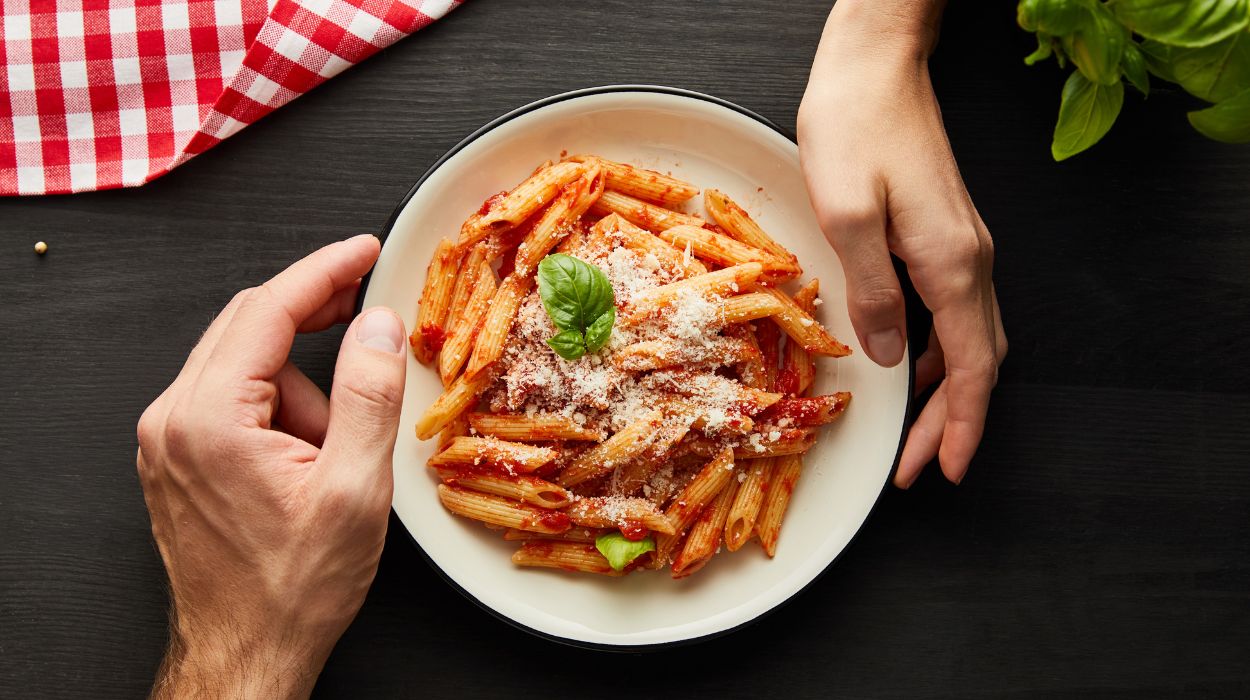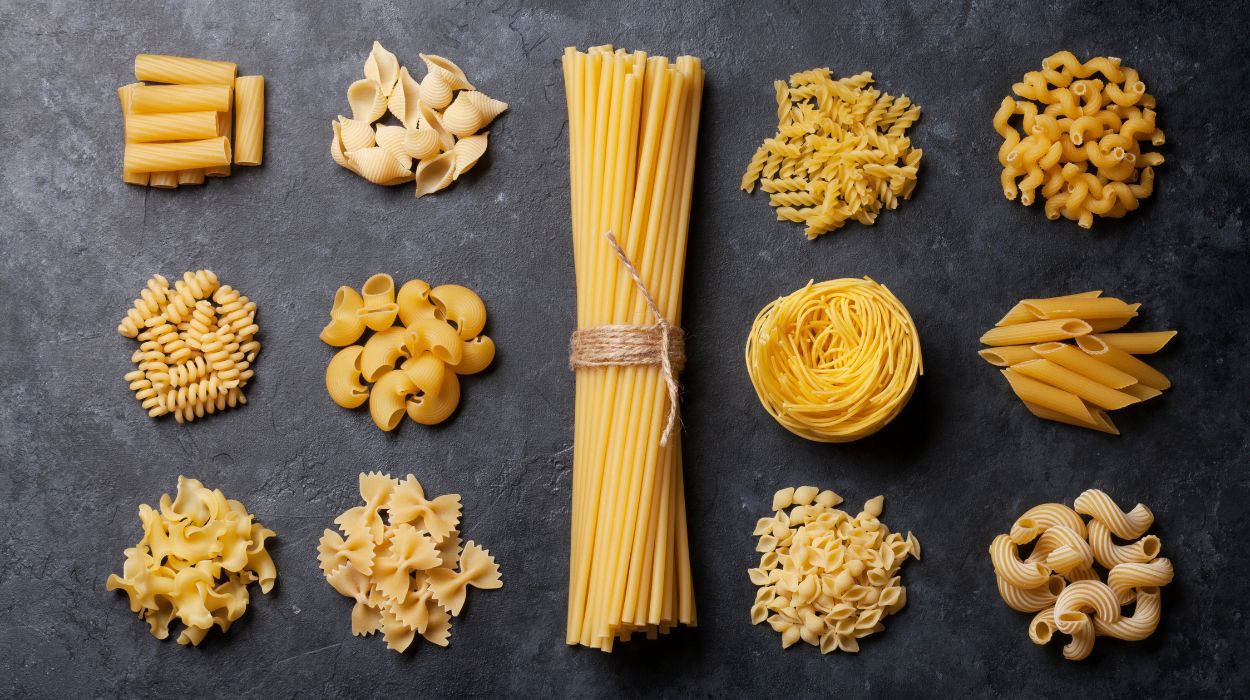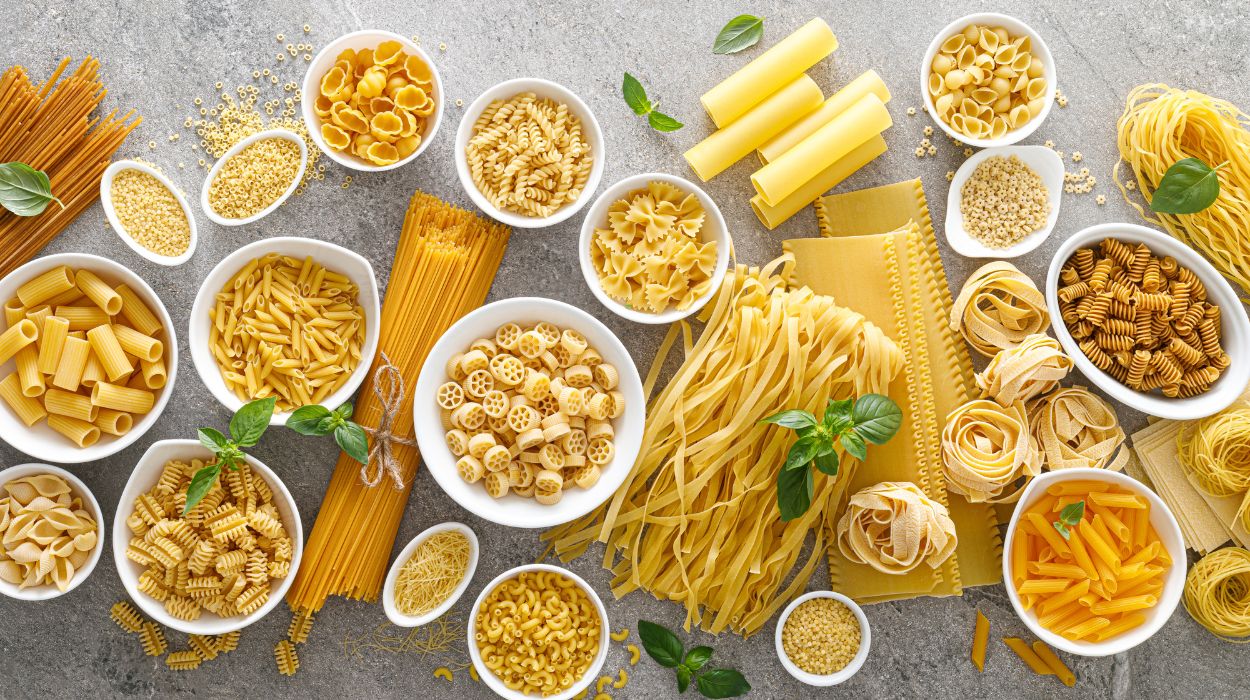Have you been hitting the gym with no results? If so, you’re probably already considering a good weight-loss diet.
In most cases, you’ll have to change your diet and avoid foods contributing to weight gain or making weight loss a nightmare.
Many households love pasta because it’s easy to make and personalize. You can eat pasta with almost anything. So, is pasta good for weight loss?
It’s easy to think that pasta is bad for you when you want to lose weight, but healthy whole-grain pasta can help you lose weight. Read on to learn how pasta helps you lose weight and how much weight you can lose by eating pasta.
Is Pasta Good For A Diet?
Yes. Pasta is good for a diet because it’s full of carbs, some of the most important nutrients you need for a balanced meal. However, there are two types of pasta: refined pasta and whole-grain pasta.
Whole-grain pasta is generally better for weight loss because it has fewer calories than refined pasta.
Is Pasta Good For Weight Loss?

There’s no definitive answer for whether pasta is good for weight loss, simply because there are many factors to consider when answering this question. However, we can determine how healthy a specific type of pasta is from the type of flour it uses and other added ingredients.
Whole grain pasta typically takes longer to digest than refined pasta, which means you’ll have something in your tummy for longer. Therefore, these whole grain pasta are more satiating and reduce hunger between meals. Both whole wheat pasta and refined pasta[1] can fit on a low-glycemic index diet since both are lower than 55 on the GI scale; whole wheat pasta has a lower GI than refined pasta, however.
You’ve probably heard some myths about how unhealthy pasta is and how much it contributes to weight gain. Here are some things people think about pasta:
- Pasta has more calories than you need: Although pasta has calories, the amount depends on the type of flour used to make it and how much you eat. Whole-grain pasta can give you fewer calories than refined-wheat pasta.
- Pasta is an unhealthy food: Some people believe that pasta is a fattening food you should never eat if you’re trying to lose weight. However, that’s not true. Eating it with the right ingredients and avoiding high-fat sauces and meats can help make a balanced meal.
- The carbohydrates in pasta will lead to weight gain: Complex carbohydrates are an important part of any balanced diet. Therefore, eating regulated amounts of pasta is harmless to your weight loss journey and is recommended in the Dietary Guidelines[2] for your overall health.
- Eating pasta for dinner can make you gain weight: It doesn’t matter when you eat pasta. Weight gain results from eating more calories than you burn every day.
While you might hear many negative things about losing weight with pasta, they should not stop you from enjoying healthy pasta recipes. You can learn about the healthiest pasta diet and create a clean eating plan for weight loss.
The Nutritional Value Of Pasta
You’d be surprised to learn that whole wheat pasta is not just another high-energy food but also has some health benefits. Although different types of pasta will not share every ingredient, all pasta has carbohydrates to help meet your daily requirements, with whole grain pasta having more essential nutrients and lower calories than refined noodles.
Pasta is one of the healthy foods to eat to lose weight for the following reasons:
- Pasta is easy to customize: Pasta dishes are versatile foods that you can mold into whichever meal you like. Therefore, you can add fresh vegetables, healthy fats, and lean proteins to make it a balanced weight-loss meal.
- It reduces the need for snacks: Researchers found[3] that whole-grain pasta can reduce hunger and keep you full for many hours. This reduces the calories you’d get from snacking in between meals.
- It gives you energy: Pasta has a lot of carbohydrates, which can give you energy for intense workouts and accelerate weight loss. If you are sedentary, however, too many carbohydrates will be stored as fat.
Which Pasta Is Good For Weight Loss?

Just about any whole-grain pasta recipe can be adapted to help you lose weight. While we can’t exhaust all the types of pasta, we can look at the best ones for weight loss below:
Chickpea Pasta
If you’re looking for gluten-free pasta for weight loss, chickpea pasta is the best option. It’s made from legumes, which are not popular in American cuisine despite having many health benefits.[4]
Chickpeas are highly nutritious[5] and contain the most essential things you need in a weight loss food. Depending on the brand, chickpea pasta might also have some added protein.
Eating chickpea pasta over refined pasta will help you stay full throughout the day, especially if you’re fasting. You also get all the nutrients you need without sacrificing too much of your calorie deficit. Chickpea pasta also gives people with a gluten problem a healthy weight-loss food.
Brown Rice Pasta
Brown rice pasta is created from flour. It has more nutrients than white rice[6] and is less processed. One cup of brown rice penne[7] pasta has 181 calories per cup, while one cup of enriched egg noodles[8] has 382 calories per cup. It also reduces calories for the same serving, which is vital for your daily calorie deficit when losing weight.
Brown rice is rich in manganese, a rarely thought-about but essential nutrient that prevents metabolic syndrome.[9] If you’re trying to lose weight, welcome any food that improves your metabolism and facilitates you to burn calories.
As a whole grain, brown rice pasta has more fiber than refined white pasta like fusilli or spaghetti. Fiber is vital to any weight loss diet because it boosts your satiety and reduces hunger between meals. This reduces the calories you’ll likely get from snacking between your main meals.
In 2020, researchers gave two groups of obese women brown and white rice daily. After six weeks, they noticed that the group that had been eating brown rice had lost more weight[10] than the group that ate white rice.
Quinoa Pasta
Quinoa pasta is probably not what anyone would think of when pasta is mentioned. This pasta is made from quinoa flour, a product of quinoa seeds. Often called the ancient wheat, quinoa are seeds that look like colorful grains.
While it’s not as popular as modern-day wheat, it has comparable nutrients, including the all-important fiber content. This gives it many health benefits[11] compared to refined pasta, which consists of primarily carbohydrates and calories. There are over 4 grams of fiber[12] per cup of cooked noodles!
In 2017, researchers conducted a study[13] on the effects of quinoa on metabolism. The results showed that the seeds reduced metabolic syndrome by 70%. Metabolic syndrome can make weight loss a nightmare because it prevents your body from burning calories.
Quinoa pasta’s high carbohydrate content can also be helpful if you’re losing weight by working out. You can work out longer and burn excessive fat if you have more energy.
Tips For Preparing And Eating
With dozens of types of pasta to choose from and endless other foods to pair them with, it can be challenging to know how to prepare the best pasta for weight loss. Fortunately, we’ve compiled a few things you should remember when making and eating pasta to lose weight.
Hydrate With A Glass Of Water
While you enjoy your healthy pasta dish, it’s important to remember to drink water. It’s impossible to overstate the importance of drinking water during weight loss.
If you do weight loss exercises, your body loses water during the workouts. You need to recover this water by hydrating throughout the day. Water can also help you lose weight[14] quickly if you have gained water weight from mild dehydration.
Adding a glass of water to your pasta diet will help you eat less each meal but remain full afterward. It will also prevent your body from storing water weight from chronically underhydrating.
Eat Your Vegetables
It’s impossible to emphasize how much you need vegetables when losing weight. Most vegetables have lots of dietary fiber, which makes your meal more filling.
The fiber in vegetables enhances your metabolism[15] and speeds up the rate at which you lose weight. They’re also good for their vitamins and minerals, protecting you from diseases as you lose weight.
Have A Low-Calorie Protein Source
One of the most common things you’ll hear about weight loss diets is that they should be rich in protein. Proteins are required for a balanced meal, and they’ll also help fill you up so you don’t crave snacks between meals.
Whole-grain pasta has fewer calories than its alternatives. However, it may contain more carbohydrates than you will get in a typical Mediterranean diet. Therefore, limiting other high-carbohydrate foods is important if you routinely enjoy pasta.
Fortunately, you can enjoy many low-calorie, high-protein foods, like eggs, fish, and chicken, with cooked pasta. These foods will give you enough protein for your weight loss needs without drastically affecting the calories or carbohydrates you’ve eaten.
Watch Your Portions
When creating a weight loss diet, it’s important to remember the portions instead of focusing only on the types of food. Although whole-grain pasta has fewer calories than refined pasta, overeating it will increase the calories in one meal. A typical serving of grains[2] (pasta, bread) is between 2 ounces of refined and 3 ounces of whole grain per day, to slightly over 5 ounces of each type of grain, depending on age, sex, and calorie intake.
One creative way to reduce the calories you eat from pasta is by filling your plate with vegetables and protein, leaving a little space for just enough pasta to give you the taste and nutrients you need. These will get you full before you overeat pasta. You can also eat a healthy soup before meals to reduce your appetite and lengthen the period you’ll feel full after the meal.
Avoid High Sugar And Fat Sauces
Interestingly, it’s not the pasta itself but the sauce you choose that could derail your weight loss efforts. Most people like to use dairy-based sauces like cheese, which contains loads of calories and saturated fats.
Therefore, you should use healthier alternatives like tomato-based sauces with herbal seasoning. This will make your pasta healthier, lower in calories and fat, and tastier.
You can also make your healthy sauce with fresh ingredients. Just blend some tomatoes, vegetables like squash or spinach, and anything else you think might add flavor without increasing saturated fats or calories. Toss on a little grilled chicken and olive oil, and you have a healthy weight-loss diet meal.
Conclusion
Many people feel guilty for eating pasta while trying to lose weight because they think it’s bad for them. While refined pasta is not the best for losing weight, you can keep your weight-loss journey moving by eating whole-grain pasta and using portion control.
Whole-grain pasta is the best for weight loss, especially when you add plenty of vegetables and protein. This balanced meal can replace your lunch, dinner, or breakfast and give you something healthy to eat while you lose weight.
Frequently Asked Questions
Yes. It’s okay to eat pasta when trying to lose weight as long as you understand the number of calories in the pasta and how they affect your calorie deficit.
Yes. Pasta generally has more calories than you’d find in a typical weight loss diet such as the Mediterranean diet. However, whole-grain pasta has fewer calories than refined pasta.
Yes. However, eating whole-grain pasta with fewer calories and carbs is important. However, you should reduce calorie and carbohydrate intake from other foods to meet your daily calorie deficit.
Yes. 100 grams of white bread[16] has 267 calories, while 100 grams of whole-grain pasta[17] has 159 calories. Additionally, the pasta has 4.6 grams of dietary fiber compared to white bread’s 2.3 grams.
Yes. If you’re using weight loss supplements, you can eat pasta without experiencing negative impacts. However, some fat burners work by reducing your appetite, so you might not overeat pasta.
There are dozens of pasta types, most made from different ingredients. However, whole-grain pasta is generally better for weight loss because it has fewer calories and more healthy nutrients.
Yes. Pasta is excellent for diets because it’s very customizable. You can serve pasta with almost anything left over in your kitchen, making it easy to choose healthy foods to pair it with.
A daily deficit of 500-1000 calories will cause a 1-2 lb/week weight loss. As long as you stay within a calorie deficit while eating pasta, you will lose weight.
 Evidence Based
Evidence Based

